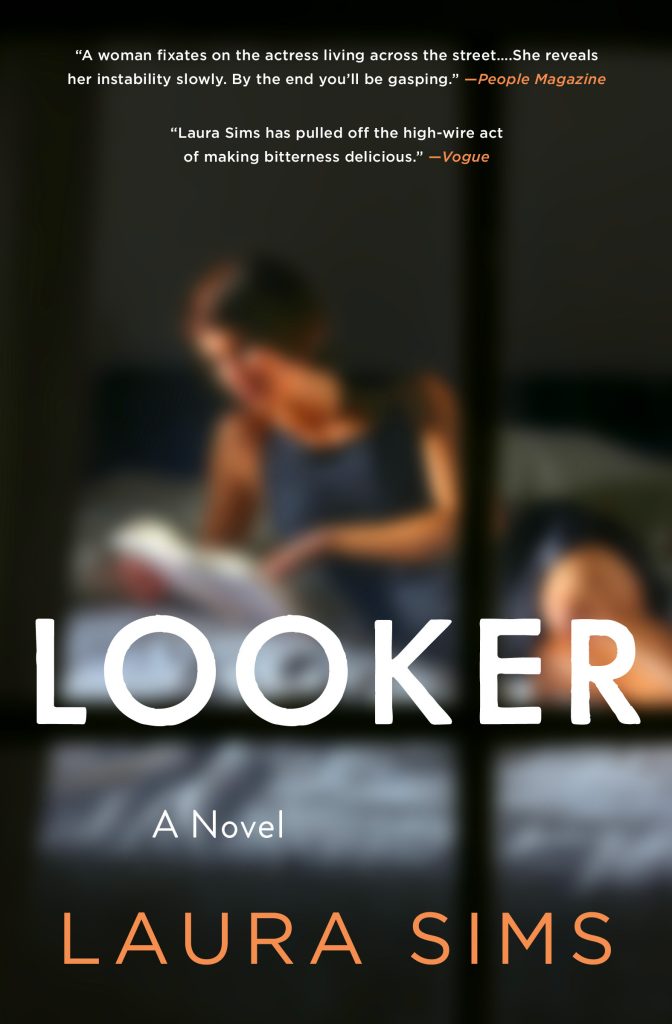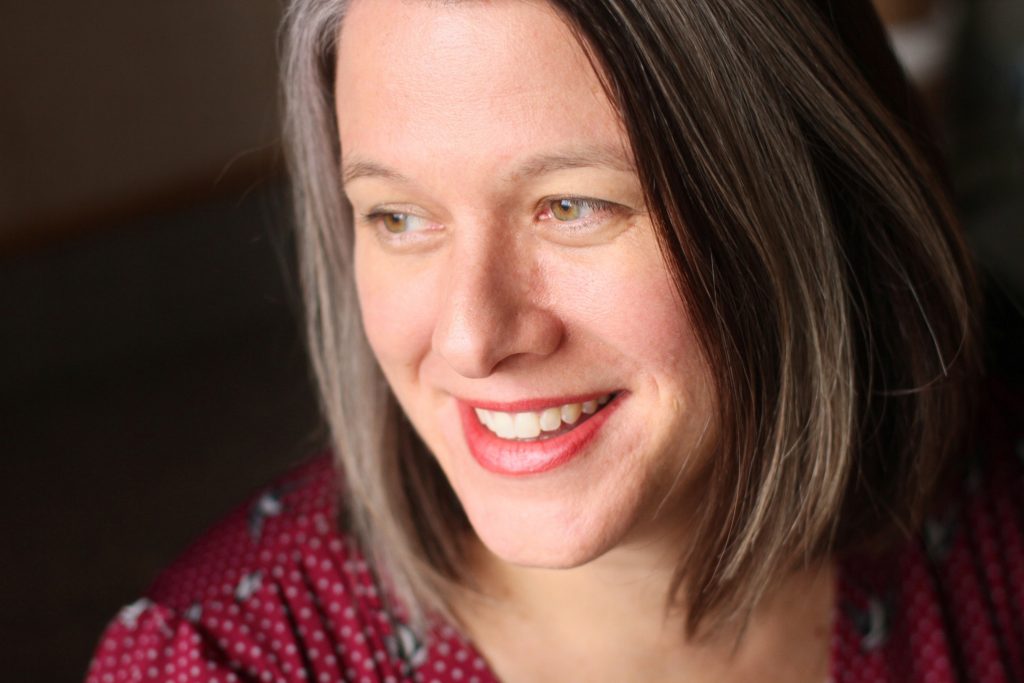INTERVIEW BY PHILIP METRES
—
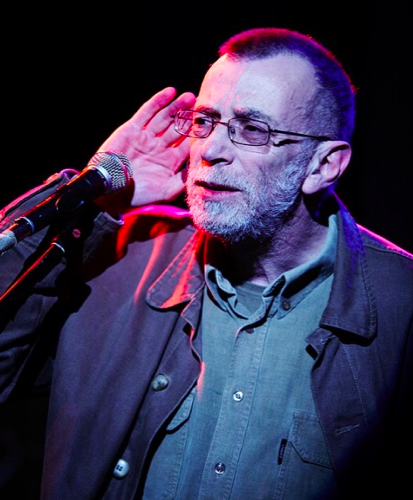
Born in 1947 and one of the founders of Moscow Conceptualism, Lev Rubinstein is among Russia’s most well-known contemporary poets and writers. He has been called the “Postmodern Chekhov.” His poetic texts, beginning in the 1970s, are written on stacks of index cards, a non-poetic medium that he was inspired to create through his work as a librarian at the Lenin Library. His work was circulated through samizdat and underground readings in the “unofficial” art scene of the seventies and eighties and found wide publication by the late 1980s. Rubinstein lives in Moscow and writes essays and cultural criticism for the independent media. He has been a leader in the pro-democracy and anti-Putin movements in Russia for some time now. In 2004, Catalogue of Comedic Novelties: Selected Poems of Lev Rubinstein was published, about which, Ron Silliman writes: “The major work by a major poet, one of the founders of Moscow Conceptualism, and aptly translated. There is no question that this is one of the ‘must have’ [poetry] books of 2004.” Compleat Catalogue of Comedic Novelties was published in 2015 by Ugly Duckling Presse, and was a finalist for the AATSEEL Prize for Translation. The interview is part of a series of interviews with Russian poets, called “From Pushkin to Pussy Riot: Conversations with Russian Poets,” and was conducted in Russian, in Cleveland during Rubinstein’s visit in 2007. It was conducted and translated by Philip Metres.
PHILIP METRES: I’d like to begin at the beginning. How did you begin writing poems and in what forms?
LEV RUBENSTEIN: Well, compared to others in my generation, I began to write poetry fairly late, not at 16 years old like the rest. I was already twenty years old, studying at the university, at the very end of the 1960s. I really wanted to write poetry then, even more than I wanted to read it. I had an agonizingly drawn-out period of imitating cult figures like Mandelstam, Khlebnikov, Marina Tsvetaeva—like all the others in my generation. Completely willy-nilly, my poems closely resembled theirs, and I didn’t like that at all. So I even avoided showing them to others. Only in the mid-70s did my own voice, my own style, emerge. In 1974, I published my first note card poem, and I’ve been going ever since.
PM: What poets and artists influenced you? How did you come up with the method of the note card?
LR: Literature and poetry were not the primary influences, but different modes of art—for example, in contemporary music like John Cage, and visual arts like Pop Art, Conceptualism. And also, I believe that in a cursory and indirect way Eastern philosophy of Zen influenced me, which of course I knew only glancingly, but some ideas of Zen also were important. But why I began using the note cards is difficult to explain. From a simply external reason I worked in a library for many years, and simply the cards were always available. But that’s only the surface reason.
Why was it important to me to write poems that weren’t flat and two-dimensional, but had a third dimension? It was important because I existed in the situation of the underground, of samizdat. I wanted to create something for my own benefit. Why must I write texts that wouldn’t be published? I’d rather write poems that would be impossible to publish. That was the mindset. I wanted to objectivize the text, create text as an object, without regard for the typical worries about the press run, about costs. I wrote almost everything by hand, not with a typewriter.
I wanted that the text could be an object, a literary object, a theatrical object—all at once. And that’s exactly how it worked out. Because often it happens that the very same text gets into a poetry anthology, a prose anthology, an art exhibit, or gets used by musicians for a performance, or gets staged as theater. The very same text.
PM: Are there other poets and artists of your generation who used similar artistic strategies, and did you know them?
LR: We got to know each other, though late enough so that we didn’t really influence each other. We were already adults. I, [Dimitri Alexandrovich] Prigov, [Vsevolod] Nekrasov—we worked in isolation for many years. So it was important, at the end of the 1970s, when we formed a literary club, where people understood what we were trying to do. Because before the formation of that group, in literary terms, I was absolutely marginal.
PM: Can you explain a bit more about your method of construction?
LR: My poetic texts are not completely and clearly one genre or another. They swim between genres, as it were. But it’s important that within each text this occurs. Within each text, the genres overflow into one another—in one moment, it looks like a lyric poem, but by the next card, it turns out not to be lyric, but a bit of prose, for example. And then another is some everyday conversation on the street, or a cynical remark. Or an empty card. A field of silence. This is borrowed straight from music, because the pause is crucial for musical works. For me, the pause is critical. The expanse and time between cards—it’s all part of the text. Because of this, I always have had a problem publishing texts in book form; there are always problems to solve and compromises to make. I always say that that version is not completely my text, it’s a reproduction. Not a copy, but a reproduction, or as I’ve written before, like a photograph of a sculpture.
In other words, it provides a representation, but not the full volume and dimensionality. Because of course, it’s crucial that reading this work is not done just with eyes or the head but with the hands.
PM: There is a wonderful photograph of you cupping your ears on stage as if trying to listen to a far-off voice in the audience. I think of it as a symbol of your creative process. Are the snatches of conversation in your works from actual conversation?
LR: Not necessarily. One of my favorite techniques is quasi-quotation. Many fragments that could be perceived as quotes or citations are not actual quotes. I’m not citing texts, I’m citing linguistic genres—it’s a quote of genre or style. When a person read it, it’s as if he’s read it or heard it or seen it somewhere before. Although, I’m also quite attracted to “readymades,” but I stylize it so that it’s as if it were real.
PM: This stance of listening, this work of quasi-citation—it’s not just an aesthetic method, but also a kind of ethical stance. It says that each person has something interesting to say.
LR: Of course.
PM: That normal people can speak poetry.
LR: Absolutely right. I have a text called “The Hero Emerges” that begins with a series of statements written in iambic tetrameter, so strongly that Russian listeners immediately recognize it from school as a classical Russian poetic meter. But the phrases are very much everyday language, so a comic effect arises. In terms of meter, it’s like [Alexander Pushkin’s] Evgeny Onegin, but the content is banal and it just keeps coming. Hence the comedy. Sadly, it’s very hard to translate that effect. But really, it’s a manifesto that we are surrounded by poetry. That our linguistic laziness, through a special kind of listening, reveals itself as poetry.
Poetry is not what we create, but what we can hear.
…
from “The Hero Emerges” (1986):
53
I tried it on, it fit just right.
54
So how’s about it, one more round?
55
You better ask those other guys.
56
Thank you. It’s time for me to go.
57
And you believed it, you poor sap?
58
This guy’s been toasted since breakfast.
59
Instead, take Mitka for a walk.
60
Who is the father? Does she know?
61
Next week, it’ll be a year already.
62
Oh, really? I had no idea.
63
Are you done talking? Now listen.
…
PM: Are you writing poetry these days?
LR: Now, very rarely. I write other things—columns, articles, essays.
PM: Why?
LR: I don’t know why. I can explain to myself, perhaps, the moment I lost motivation—that happens. There was a time when I knew why I had to write poems, and then there came a time when I didn’t know why. It’s not that I couldn’t. I could do it any time I wanted, but I don’t have the feeling of obligation, that I must do it. I’m writing prose seriously, and a few of my collections of essays have now been published.
PM: What does the essay form give you?
LR: Well, between us, first and foremost it gives me…there’s a financial component. I can’t just work for money, of course. It also gives me a new experience, a new type of challenge. If in poetry I’m completely free, in prose I have some obligation to be understandable, understandable but not vulgar. That’s an intriguing but difficult aim. To be original but also understandable.
And when I began to write essay, I thought I could earn some money easily this way. I thought I could do one thing with my left hand and something else with my right hand. It turns out not to be the case. Since I still am a poet, I wrote prose exactly as I wrote poetry, taking a long time to craft every phrase.
PM: During my study of Russian poetry and its relationship to historical change after the fall of communism, I saw how poetry had fallen from its heights during the Soviet period. It appears as if poetry is the most powerful in totalitarian societies. Prose, in its horizontality, its understandability, seems more suited to capitalist societies.
LR: Poetry, as an institution in the West, has become quite marginalized, it seems to me. But in Russia, it’s completely different. It’s always been more important. It’s a completely different tradition and relationship to the word. The more archaic the society, the greater the role played by poetry. In various Eastern countries—in Georgia or Armenia for example—poetry plays a large role. Even the peasants know and recite poetry.
PM: In Russia, this is now disappearing.
LR: Yes, it’s disappearing, but the inertia still exists. Poetry during the Soviet period, during perestroika, played an important role. Though I always rejected that role. I always saw poetry as a private thing, an autonomous thing, a social but not a political thing.
Simply put, poetry always could be political, but only if it was naturally political, not just because the poet wanted to be political. It must be part of its nature. Mandelstam, one day, said to his wife, when they began to persecute him, “look how they honor poets—someone can be killed for poetry.” They honor poetry because they are afraid of it. In that sense, yes, poetry is political.
But in my era, in my circle during the 1970s and 1980s, poetry was not a means of resistance as much as a means of personal salvation, let’s say—in other words, one’s strength, one’s seclusion, one’s home. There was no air to breathe, but the poet made a hole in the wall in order to breathe.
PM: What do you think of the translations of your work?
LR: Well, first, I am grateful that they exist. At the same time, and I don’t want to offend, but there’s the expression that poetry is that which disappears during the translation.
PM: That’s been attributed to Robert Frost, among others.
LR: Well, it’s apt.
PM: When I began translating your work, I thought it would be easier than translating more traditional poetry, but it’s actually more complex than traditional poetry.
LR: Perhaps the greatest champion challenge of my texts for translators is “Mama Washed the Window,” because there’s this deceptive impression that it’s a simple text.
…
from “Mama Washed the Window” (1987):
1
Mama washed the window.
2
Papa bought a TV set.
3
The wind was blowing.
4
Zoya was stung by a wasp.
5
Sasha Smirnov broke his leg.
6
Borya Nikitin cracked his skull on a stone.
7
It started raining.
8
Brother teased brother.
9
The milk boiled over.
10
The first word he said was “elbow.”
11
Yura Stepanov rigged up a tepee.
12
Yulia Mikhailovna was strict.
13
Vova Avdeev fought all the time.
14
Tanya Chirkova was dumb.
15
Galya Fomina’s boyfriend had one arm.
16
Sergei Alexandrovich had a phone installed.
17
The invalid burned to death in his car.
18
We took a walk in the woods.
19
Grandma had cancer.
20
Grandma died in her sleep.
21
I often dreamt of Grandma.
22
I was afraid I would die in my sleep.
23
Igor Dudkin looked like a Georgian.
24
Sergey Alexandrovich joked with Papa.
25
The Sorokins had plums, but they also had a dog named Jack.
…
This primitive style is a construction, as if a child writes in a notebook all that he is experiencing, but with the crude vocabulary and simple syntax of a child. Plus, the first line was a common and immediately recognizable first line of Russian writing practice textbooks.
PM: In the first English translation, Joanne Turnbull translated the first line as “The cat wore a hat,” trying to get close to the simple language of the original. But she loses the sense of perspective that exists in the first two cards: “Mama washed the window. Papa bought a TV.” That sense of a widening angle of view slowly accessible to the child.
LR: Well, I’d never thought of that before. In French, they translated it as “Papa smoked a pipe.”
PM: Perhaps an allusion to Magritte! You are now an international poet, in a sense, having been translated into many languages and traveled widely. Do you get to know other poets who have been doing similar experimental work?
LR: Unfortunately, I’m a monoglot, I’m ashamed to say, so I don’t know other poetries very intimately, except perhaps the German.
PM: In the 1970s, Robert Grenier, an American experimental poet, was also writing poems on note cards, though his were principally visual in nature, whereas yours feel more aural.
LR: There is a tradition in Russian poetry, especially in the underground, of oral poetry, recited poetry. You don’t read it at all, you just listen to it. To this day, Russian poetry is highly metrical. In the West, you don’t really have that dominant metrical tradition.
PM: Yes, there’s the figure of Nadezhda Mandelstam memorizing all of Osip Mandelstam’s poems so that they wouldn’t be forgotten during the Stalinist era. And of course there’s the fact that in Russia, illiteracy led to a greater emphasis on memorization and recitation.
LR: Even until in the 1930s, only ten percent of Russians were literate.
PM: What is the state of Russian poetry today?
LR: It’s normal. There are many poets, some interesting, some not so interesting. There are institutions, schools, clubs, places where poetry exist, journals, etc. Everything. It’s not as popular as in the Sixties, and that’s good. Because in the Sixties poetry had an abnormal popularity, due to the fact that there weren’t any other social institutions. There was no rock culture, there was no club culture, no institutions of expression—
PM: —no freedom. And poetry functioned as the great 19th century novels did—
LR: Yes, in the prophetic tradition.
PM: Some critics have argued that your work is principally parodic and ironic. It seems to me that the parodic tonality, but that it’s not the main one.
LR: There are other tones. If we’re talking about irony, there are different kinds of irony as well. But irony is fundamentally distance. Distance between the author’s speech and another. Parody is citation. But the humorous effect of reading comes from the sudden collision of genres, of the serious and the unserious. In those places, there’s always humor. I relate to the serious with humor, and vice versa. The traditional in poetry is typically the serious, and my relationship to it is comic.
PM: There’s irony, there’s parody, there’s musical structure, but in the end, in a text like “Here I Am,” there’s also a meditation on death itself.
LR: In some sense, yes.
PM: To me, the genius of your work is its combination of postmodern technique and its wrestling with eternal questions.
LR: Well, that’s a good way to end!
![[PANK]](https://pankmagazine.com/wp-content/themes/pank/assets/images/pank-logo-large.png)

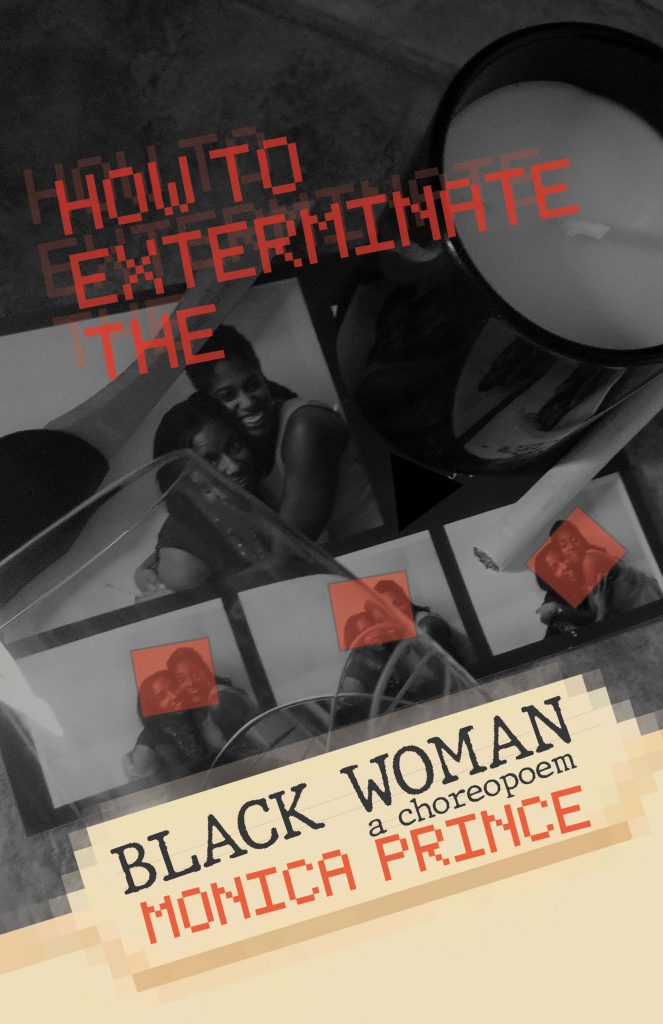
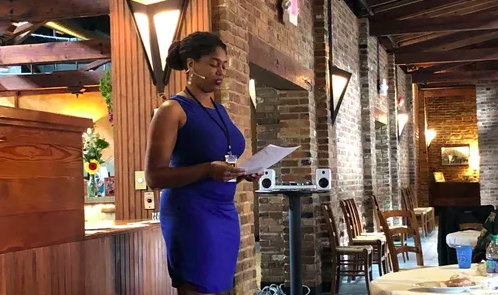
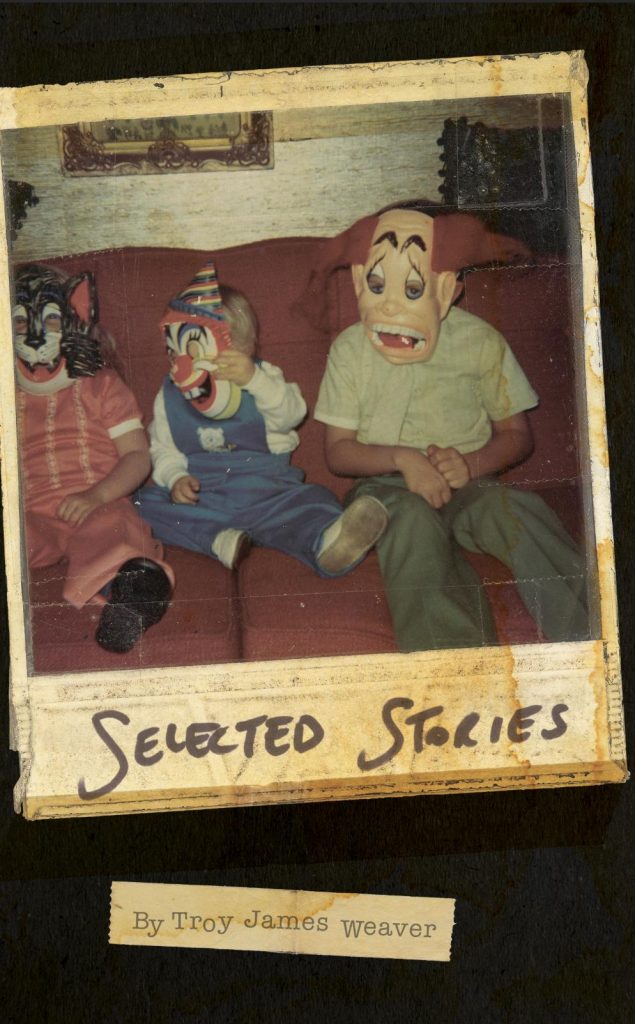
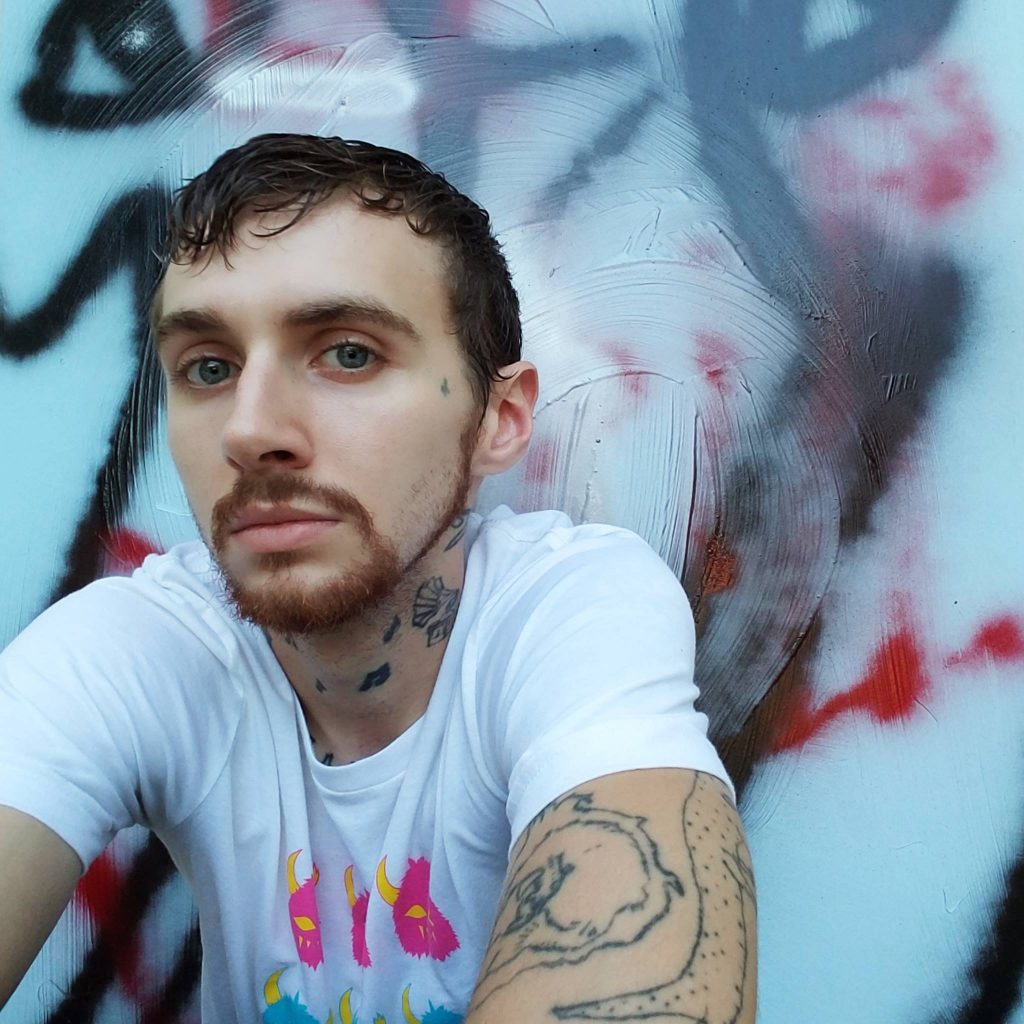
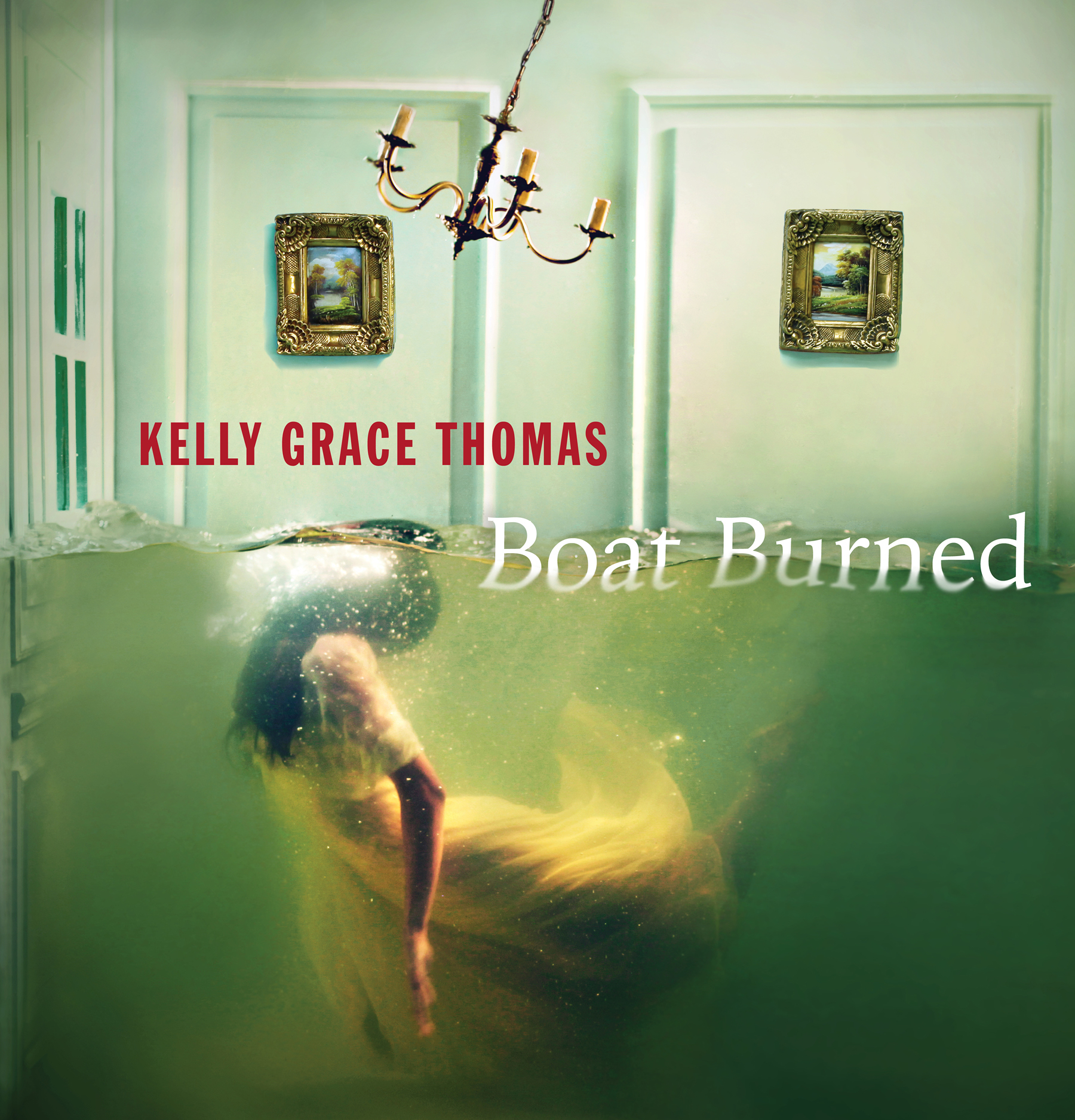
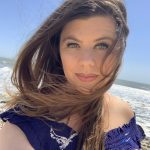
 JULIA KOLCHINSKY DASBACH came to the United States as a Jewish refugee in 1993, from Dnepropetrovsk, Ukraine, and grew up in the DC metro area suburb of Rockville, Maryland. She spent three years in Eugene, earning an MFA in Poetry from the University of Oregon is currently back east, working towards a Ph.D. in Comparative Literature and Literary Theory at the University of Pennsylvania. Her research focuses on contemporary poetry about the Holocaust, with a special focus on atrocity in former Soviet territories. Julia is the author of
JULIA KOLCHINSKY DASBACH came to the United States as a Jewish refugee in 1993, from Dnepropetrovsk, Ukraine, and grew up in the DC metro area suburb of Rockville, Maryland. She spent three years in Eugene, earning an MFA in Poetry from the University of Oregon is currently back east, working towards a Ph.D. in Comparative Literature and Literary Theory at the University of Pennsylvania. Her research focuses on contemporary poetry about the Holocaust, with a special focus on atrocity in former Soviet territories. Julia is the author of 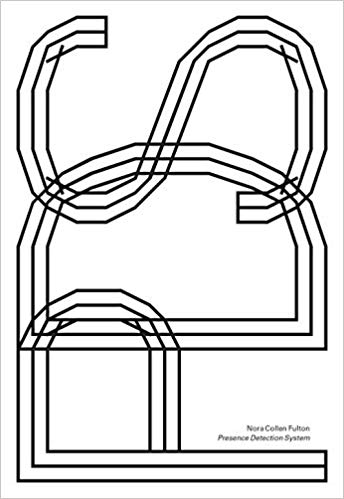
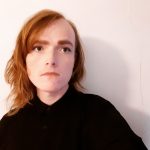 NORA COLLEN FULTON is a poet living in Montreal. Her first book, Life Experience Coolant, was published by Bookthug. Presence Detection System is her second collection of poems, and her third, Thee Display, is forthcoming next year through the Documents Series, co-produced by the Center for Expanded Poetics and Anteism Books. She currently occupies herself with doctoral studies; her research attempts to apply debates in philosophy regarding the relationship between ontology and mathematics to the ontological stakes of trans studies.
NORA COLLEN FULTON is a poet living in Montreal. Her first book, Life Experience Coolant, was published by Bookthug. Presence Detection System is her second collection of poems, and her third, Thee Display, is forthcoming next year through the Documents Series, co-produced by the Center for Expanded Poetics and Anteism Books. She currently occupies herself with doctoral studies; her research attempts to apply debates in philosophy regarding the relationship between ontology and mathematics to the ontological stakes of trans studies.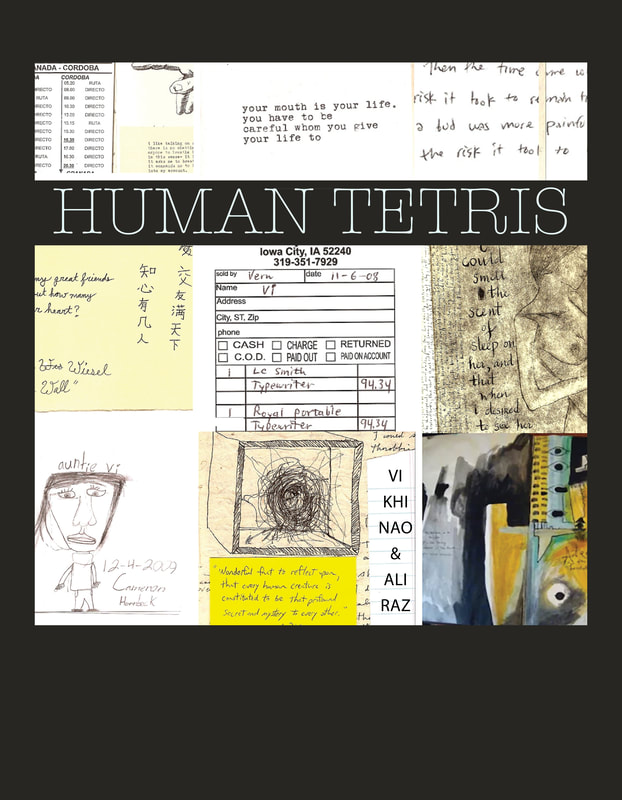
 VI KHI NAO is the author of three poetry collections, Sheep Machine (Black Sun Lit, 2018), Umbilical Hospital (Press 1913, 2017), and The Old Philosopher (winner of the Nightboat Prize for 2014), the short stories collection A Brief Alphabet of Torture (which won FC2’s Ronald Sukenick Innovative Fiction Prize in 2016), and a novel, Fish in Exile (Coffee House Press, 2016). Her work includes poetry, fiction, film and cross-genre collaboration. Her stories, poems, and drawings have appeared in NOON, Ploughshares, Black Warrior Review and BOMB, among others. Vi holds an MFA in fiction from Brown University.
VI KHI NAO is the author of three poetry collections, Sheep Machine (Black Sun Lit, 2018), Umbilical Hospital (Press 1913, 2017), and The Old Philosopher (winner of the Nightboat Prize for 2014), the short stories collection A Brief Alphabet of Torture (which won FC2’s Ronald Sukenick Innovative Fiction Prize in 2016), and a novel, Fish in Exile (Coffee House Press, 2016). Her work includes poetry, fiction, film and cross-genre collaboration. Her stories, poems, and drawings have appeared in NOON, Ploughshares, Black Warrior Review and BOMB, among others. Vi holds an MFA in fiction from Brown University.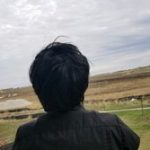 ALI RAZ received an MFA in Fiction from the University of Notre Dame. Her work has appeared in 3:AM Magazine, Tupelo Quarterly, Occulum, Queen Mob’s Teahouse, and elsewhere. She lives in Los Angeles.
ALI RAZ received an MFA in Fiction from the University of Notre Dame. Her work has appeared in 3:AM Magazine, Tupelo Quarterly, Occulum, Queen Mob’s Teahouse, and elsewhere. She lives in Los Angeles. MIKE CORRAO is the author of three books, Man, Oh Man (Orson’s Publishing), Two Novels (Orson’s Publishing) and Gut Text (11:11 Press), one chapbook, Avian Funeral March (Self-Fuck), and many short films. Along with earning multiple Best of the Net nominations, Mike’s work has been featured in publications such as 3:AM, Collagist, Always Crashing, and The Portland Review. He lives in Minneapolis. Learn more at
MIKE CORRAO is the author of three books, Man, Oh Man (Orson’s Publishing), Two Novels (Orson’s Publishing) and Gut Text (11:11 Press), one chapbook, Avian Funeral March (Self-Fuck), and many short films. Along with earning multiple Best of the Net nominations, Mike’s work has been featured in publications such as 3:AM, Collagist, Always Crashing, and The Portland Review. He lives in Minneapolis. Learn more at 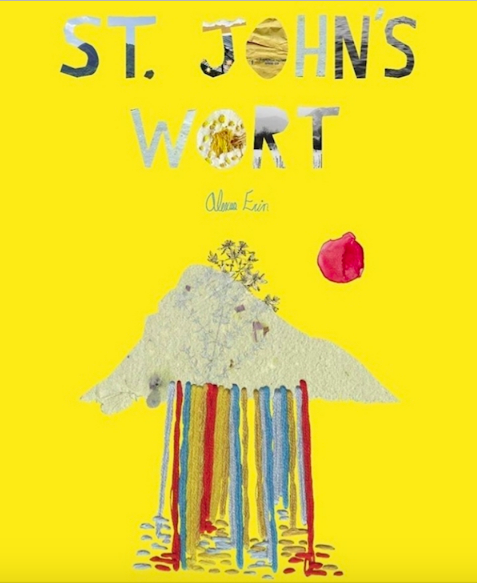 (Animal Heart Press, 2019)
(Animal Heart Press, 2019)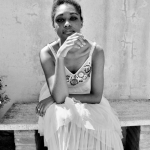 ALEXUS ERIN is an American poet, performer, and Ph.D. candidate living in the UK. Her poetry has previously appeared in Potluck Magazine, The Melanin Collective, The Nervous Breakdown, The Audacity, American Society of Young Poets, God Is in the TV, LEVELER, Red Flag Poetry, Silk + Smoke and a host of others. She is the author of Two Birds, All Moon (Gap Riot Press) and Cartoon Logic, Cartoon Violence (Cervena Barva Press). She was the 2018 Poet Fellow of the Leopardi Writers Conference and a performer at Edinburgh Fringe Festival (2018). Her screenplay, American Lotus Project, won the screenwriting award at Temple University’s Diamond Film Festival (2015). When Alexus isn’t writing, dancing, singing, comedy-ing or researching maternal/child health, find her growing plants in your walls as the co-founder of Wallflower Hydroponics, and trying to catch up on sleep.
ALEXUS ERIN is an American poet, performer, and Ph.D. candidate living in the UK. Her poetry has previously appeared in Potluck Magazine, The Melanin Collective, The Nervous Breakdown, The Audacity, American Society of Young Poets, God Is in the TV, LEVELER, Red Flag Poetry, Silk + Smoke and a host of others. She is the author of Two Birds, All Moon (Gap Riot Press) and Cartoon Logic, Cartoon Violence (Cervena Barva Press). She was the 2018 Poet Fellow of the Leopardi Writers Conference and a performer at Edinburgh Fringe Festival (2018). Her screenplay, American Lotus Project, won the screenwriting award at Temple University’s Diamond Film Festival (2015). When Alexus isn’t writing, dancing, singing, comedy-ing or researching maternal/child health, find her growing plants in your walls as the co-founder of Wallflower Hydroponics, and trying to catch up on sleep.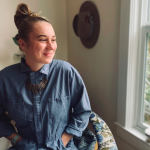 KATE HOYLE was raised in Moraga, California. Her work has been published in Scoundrel Time, The Tupelo Press 30/30 Project, and Typishly. She is an MFA candidate in Poetry at the Warren Wilson Program for Writers.
KATE HOYLE was raised in Moraga, California. Her work has been published in Scoundrel Time, The Tupelo Press 30/30 Project, and Typishly. She is an MFA candidate in Poetry at the Warren Wilson Program for Writers.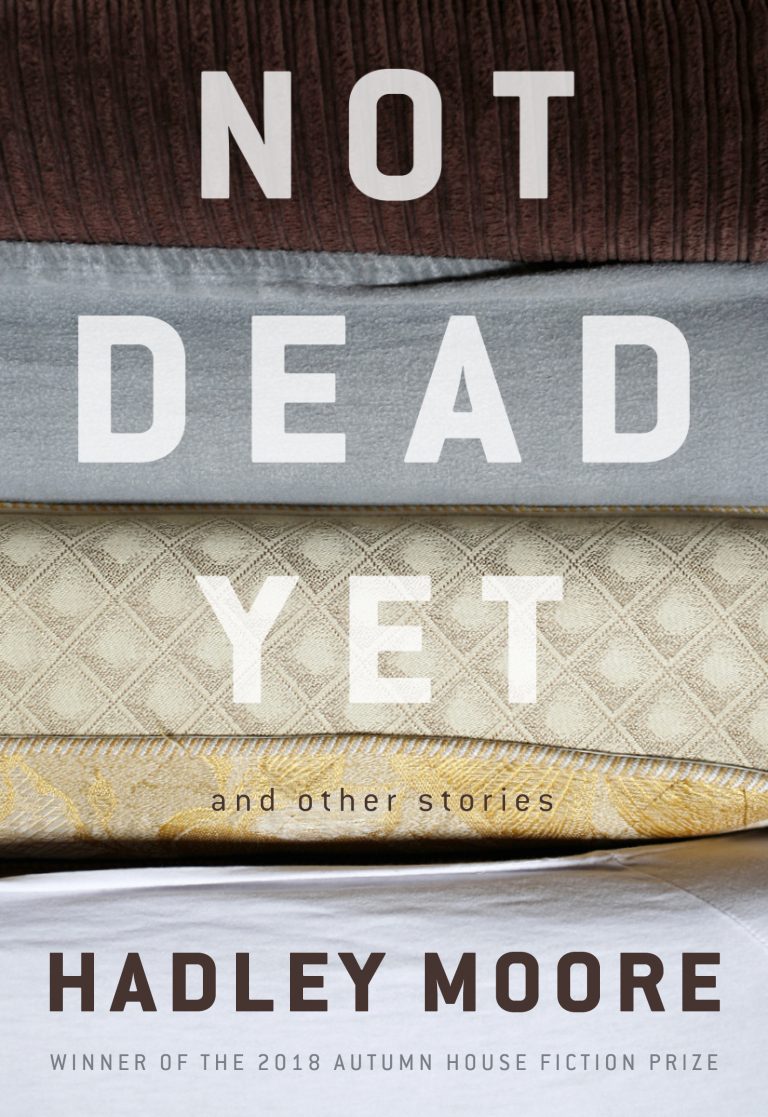 (Autumn House Press, 2019)
(Autumn House Press, 2019) HADLEY MOORE’s fiction has appeared in McSweeney’s Quarterly Concern, Witness, Amazon’s Day One, the Alaska Quarterly Review, the revived december, the Indiana Review, Anomaly, Quarter After Eight, Confrontation, The Drum, Midwestern Gothic, and elsewhere. She is an alumna of the MFA Program for Writers at Warren Wilson College and lives near Kalamazoo, Michigan.
HADLEY MOORE’s fiction has appeared in McSweeney’s Quarterly Concern, Witness, Amazon’s Day One, the Alaska Quarterly Review, the revived december, the Indiana Review, Anomaly, Quarter After Eight, Confrontation, The Drum, Midwestern Gothic, and elsewhere. She is an alumna of the MFA Program for Writers at Warren Wilson College and lives near Kalamazoo, Michigan.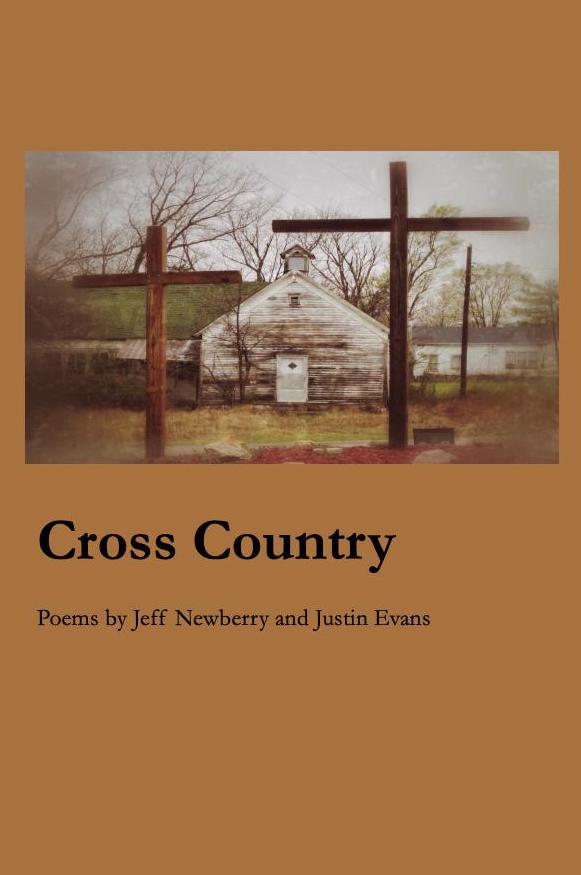
 JUSTIN EVANS was born and raised in Utah. After serving in the U.S. Army, he attended Utah schools and has been teaching in rural Nevada for the past 21 years, where he lives with his multi-media artist wife, Becky, and their three sons. He is the author of four chapbooks, including Four Way Stop, Gathering Up the Scattered Leaves, and Working in the Birdhouse, and four previous books of poems, including Town for the Trees, Hobble Creek Almanac, and Sailing This Nameless Ship.
JUSTIN EVANS was born and raised in Utah. After serving in the U.S. Army, he attended Utah schools and has been teaching in rural Nevada for the past 21 years, where he lives with his multi-media artist wife, Becky, and their three sons. He is the author of four chapbooks, including Four Way Stop, Gathering Up the Scattered Leaves, and Working in the Birdhouse, and four previous books of poems, including Town for the Trees, Hobble Creek Almanac, and Sailing This Nameless Ship. JEFF NEWBERRY is an essayist, fiction writer, and poet. His previous books include the novel A Stairway to the Sea and the poetry collection Brackish. Recently, his writing has appeared in Brevity: Concise Nonfiction, Sweet, and The American Journal of Poetry. He is on the core faculty in the Writing and Communication Program at Abraham Baldwin Agricultural College in Tifton, Georgia, where he lives with his wife and two children.
JEFF NEWBERRY is an essayist, fiction writer, and poet. His previous books include the novel A Stairway to the Sea and the poetry collection Brackish. Recently, his writing has appeared in Brevity: Concise Nonfiction, Sweet, and The American Journal of Poetry. He is on the core faculty in the Writing and Communication Program at Abraham Baldwin Agricultural College in Tifton, Georgia, where he lives with his wife and two children.